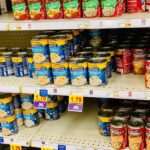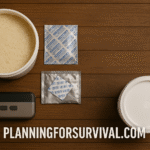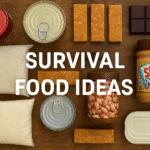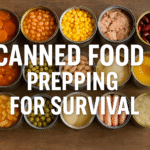In an unpredictable world, being prepared for emergencies is essential. Whether it’s a natural disaster, power outage, or unforeseen circumstances, having a well-stocked survival food supply can make all the difference. In this comprehensive guide, we’ll explore how to build and maintain an effective food stockpile to ensure you and your loved ones are ready for any situation.
1. Introduction
Emergencies can strike at any time, leaving us without access to grocery stores or restaurants. Having a survival food stockpile ensures that you won’t go hungry during challenging times. Let’s dive into the details of creating a reliable food reserve.
2. Assessing Your Needs
Before you start stockpiling, consider your unique requirements:
- Family Size: Calculate the number of people in your household.
- Dietary Restrictions: Take into account any allergies or dietary preferences.
- Duration: How long do you want your stockpile to sustain you? A few days, weeks, or months?
3. Choosing the Right Foods
Selecting the right foods is crucial for long-term storage:
- Shelf-Stable Options:
- Canned Goods: Beans, vegetables, soups, and meats.
- Dried Fruits and Grains: Rice, pasta, oats, and quinoa.
- Nutrient-Rich Choices:
- Include foods high in protein, vitamins, and minerals.
- Consider freeze-dried fruits and vegetables for variety.
- Staples:
- Rice: A versatile and long-lasting staple.
- Beans: Excellent source of protein.
- Pasta: Easy to cook and store.
4. Storage Guidelines
Proper storage ensures your food remains safe and edible:
- Temperature and Humidity:
- Store food in a cool, dry place.
- Avoid extreme temperatures.
- Containers:
- Use airtight containers to prevent moisture and pests.
- Label containers with expiration dates.
- Rotation System (FIFO):
- Practice “first in, first out” to maintain freshness.
- Regularly check and rotate items.
5. Building Your Stockpile
Let’s get practical:
- Create a Shopping List:
- Prioritize essentials: water, non-perishable foods, and hygiene supplies.
- Include comfort foods for morale.
- Budget-Friendly Tips:
- Buy in bulk during sales.
- Opt for store brands.
- Consider long-lasting items like powdered milk and instant coffee.
6. Emergency Food Preparation
When the need arises, you’ll need to cook with limited resources:
- Cooking Methods:
- Camp Stoves: Portable and efficient.
- Solar Ovens: Use sunlight to cook.
- Simple Recipes:
- One-Pot Meals: Combine rice, beans, and canned vegetables.
- No-Cook Options: Ready-to-eat canned goods and energy bars.
7. Staying Organized
Maintain your stockpile effectively:
- Inventory Management:
- Regularly check expiration dates.
- Replenish items as needed.
- Storage Rotation:
- Use older items first.
- Keep track of what you have.
8. Conclusion
Survival food storage is not just for doomsday preppers; it’s a practical step toward self-reliance. Start building your emergency pantry today. Remember, being prepared is the key to resilience in uncertain times.
Stay safe, stay prepared! 🌟🔍
Disclaimer: This blog provides general information and should not replace professional advice. Always consult local authorities and experts for specific emergency preparedness guidelines.
Read more survival tips and guides
References:
- The Preparedness Society. “Emergency Food Storage: How to Stockpile for Survival.”







